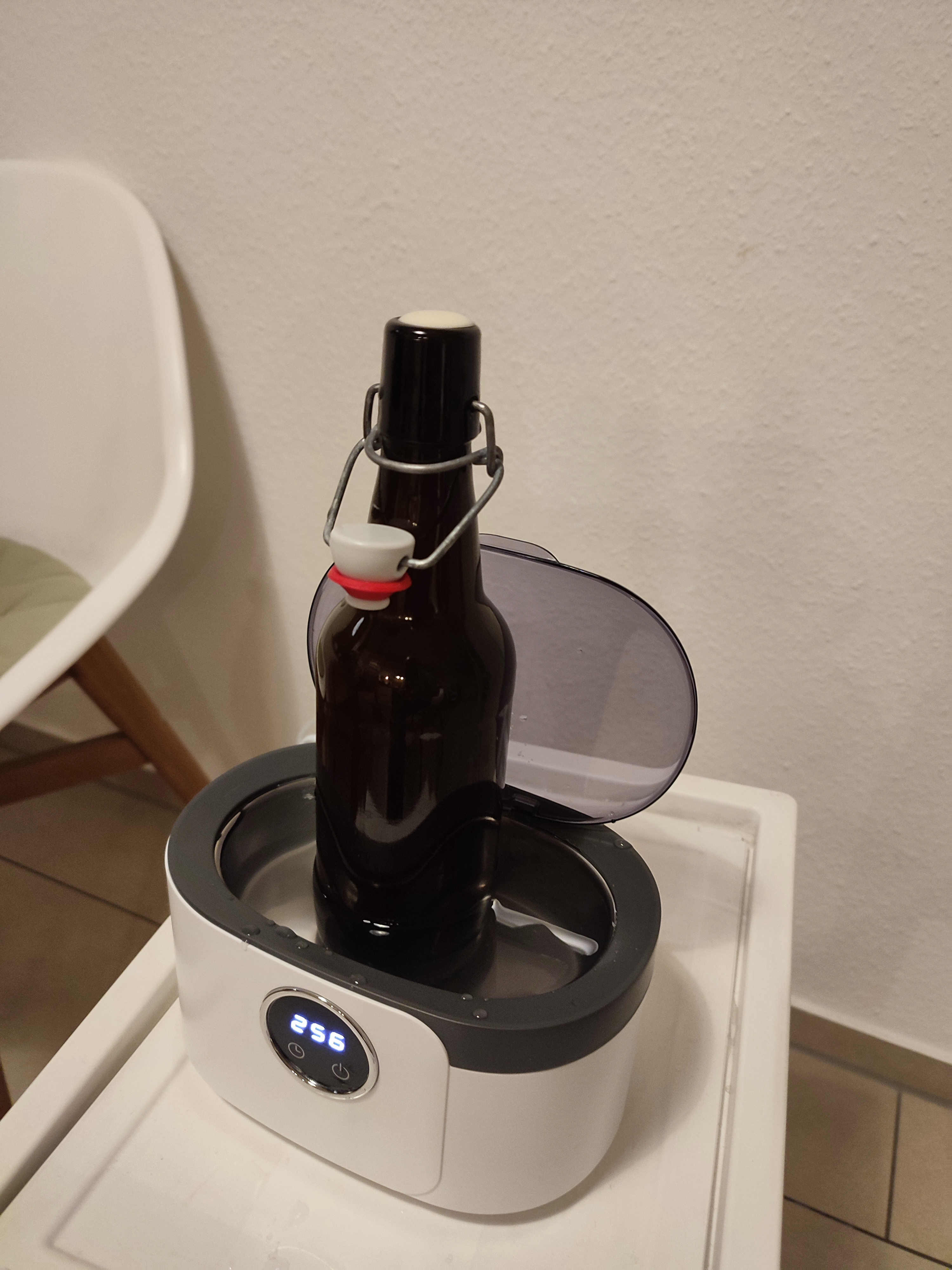Cheers fellow homebrewers,
I think I have settled with the optimum now (at least home brewer's optimum).
We all know that we do not want any oxygen in the bottle of beer that we have just filled and capped. There will be some oxygen in the liquid but when bottle priming, the yeast will take care of that in a matter of minutes. That is convenient.
But what about the air in the headspace? That oxygen is not accessible to the yeast and will slowly creep into the beer, even when the yeast has gone dormant because the priming sugar is fully eaten.
This is what lowers shelf live big time and this is what turns your (anyway not nice tasting because way too much hops in it!!) Neipa dark and murky... Ok, to be fair, it was murky to begin with. But it had those hop flavours that are gone now.... it is the oxygen in the headspace my friend! Bad bad oxygen. How dare he?
How to solve this? Minimise headspace. But still, minimum is eventualy still something and also, it is a bit risky. Too little and the bottle might crack due to liquid expansion during temperature changes. Too much and you will have the dreaded detectable oxidation.....
I asked China for help, and they delivered! Really, they did. Amazon. An ultra sonic cleaning bath. Like 25 Euros, wasn't even the cheapest one available.
The steps:
1. Bottle the beer with a bottling wand and leave about 1 cm headspace.
2. Place the filled bottle open in the ultra sonic cleaning bath for about five to ten seconds.
3. Wait for the foam to reach the top (it is not explosive, it takes time) and cap directly on the foam!
No air in the headspace, just CO2 foam equals zero oxygen in the headspace. It works really well, I have just bottled one batch with this technique.
One little caveat, you still want the headspace to be quite small as it takes otherwise ages for enough foam to develop to fill the whole headspace. About 1 cm head space is totally fine.
I hope that this will extend all your yummy beer´s shelf lifes!
Cheers
M

I think I have settled with the optimum now (at least home brewer's optimum).
We all know that we do not want any oxygen in the bottle of beer that we have just filled and capped. There will be some oxygen in the liquid but when bottle priming, the yeast will take care of that in a matter of minutes. That is convenient.
But what about the air in the headspace? That oxygen is not accessible to the yeast and will slowly creep into the beer, even when the yeast has gone dormant because the priming sugar is fully eaten.
This is what lowers shelf live big time and this is what turns your (anyway not nice tasting because way too much hops in it!!) Neipa dark and murky... Ok, to be fair, it was murky to begin with. But it had those hop flavours that are gone now.... it is the oxygen in the headspace my friend! Bad bad oxygen. How dare he?
How to solve this? Minimise headspace. But still, minimum is eventualy still something and also, it is a bit risky. Too little and the bottle might crack due to liquid expansion during temperature changes. Too much and you will have the dreaded detectable oxidation.....
I asked China for help, and they delivered! Really, they did. Amazon. An ultra sonic cleaning bath. Like 25 Euros, wasn't even the cheapest one available.
The steps:
1. Bottle the beer with a bottling wand and leave about 1 cm headspace.
2. Place the filled bottle open in the ultra sonic cleaning bath for about five to ten seconds.
3. Wait for the foam to reach the top (it is not explosive, it takes time) and cap directly on the foam!
No air in the headspace, just CO2 foam equals zero oxygen in the headspace. It works really well, I have just bottled one batch with this technique.
One little caveat, you still want the headspace to be quite small as it takes otherwise ages for enough foam to develop to fill the whole headspace. About 1 cm head space is totally fine.
I hope that this will extend all your yummy beer´s shelf lifes!
Cheers
M

Last edited:


















































![Craft A Brew - Safale S-04 Dry Yeast - Fermentis - English Ale Dry Yeast - For English and American Ales and Hard Apple Ciders - Ingredients for Home Brewing - Beer Making Supplies - [1 Pack]](https://m.media-amazon.com/images/I/41fVGNh6JfL._SL500_.jpg)






